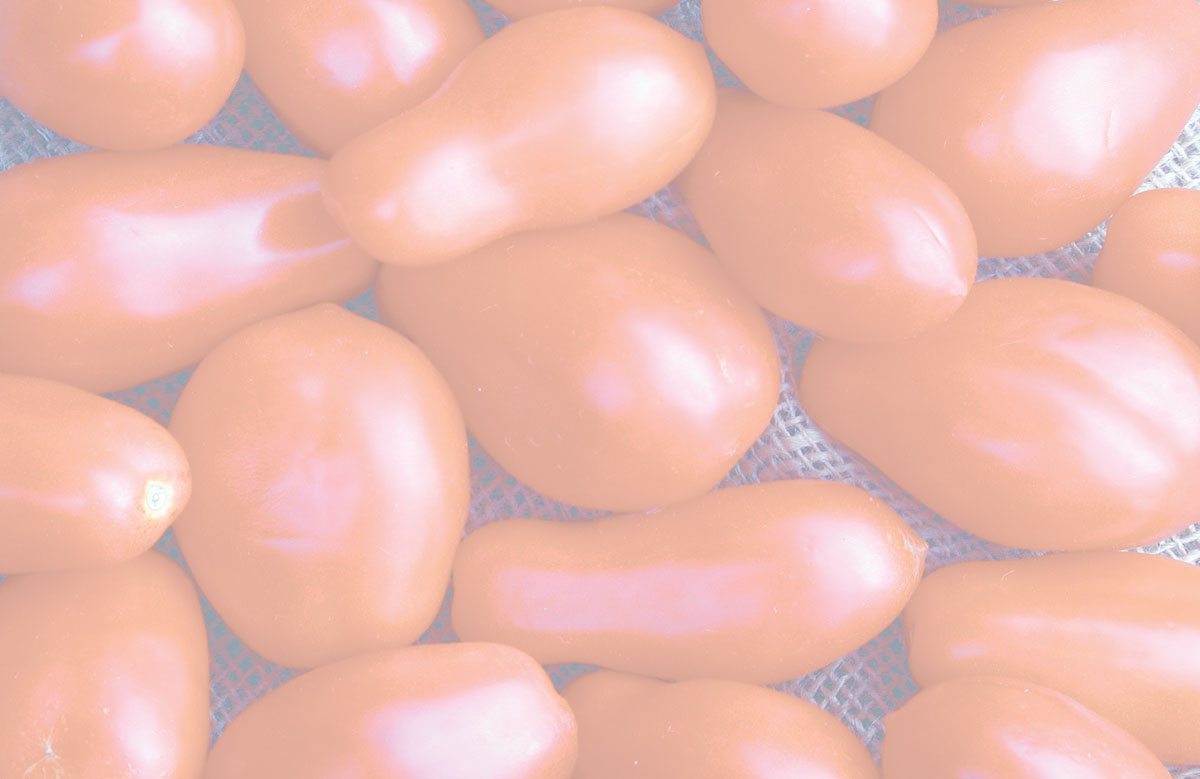Sun-Dried Tomatoes
Making your own sun-dried tomatoes is this simple: wash, halve, remove pulp and dry in the sun. There are, however, some other things you might consider before ruining a bag of fresh Romas or accidentally poisoning your family....
Dehydrated—dried—tomatoes possess a tangy chewiness that provides any dish with flavor and color. They’re healthy little things, too, high in vitamin C and an antioxidant, lycopene. Dried tomatoes re-hydrate in liquid, as when cooking soups or stews, and the intense flavor powers up any salad. And if you over-dry a batch, keep them around to powder up anything from cottage cheese to fresh Ash.
Drying tomatoes is simple and requires little thinking or effort. Basically, all you do is remove water before plant matter rots and add some natural preservatives along the way, flavoring them in the process .
.
Any kind of tomato can be dehydrated, but the best are Roma, or paste tomatoes, due to a high flesh-to-pulp ratio , fewer sides, meatier walls and less water.
, fewer sides, meatier walls and less water.
If you wish, you can use your garden’s gut-busting Mortgage Lifters by drying them on Silpats, the ultimate non-stick baking mat. Look into Seven Fires: Grilling the Argentine Way for details.
Lifters by drying them on Silpats, the ultimate non-stick baking mat. Look into Seven Fires: Grilling the Argentine Way for details.
There are three basic methods for making homemade sun-dried tomatoes: in the sun—duh—or in a food dehydrator or oven. The food dehydrator is to sun-dried tomatoes what the smartphone is to the telephone: it gets a simple job done with overblown accelerated technology. Using a dehydrator is cheating, in a sense—you don’t say “dehydrator tomatoes” do you?—but it’s also the cleanest and safest method. More about safety in a bit.
is to the telephone: it gets a simple job done with overblown accelerated technology. Using a dehydrator is cheating, in a sense—you don’t say “dehydrator tomatoes” do you?—but it’s also the cleanest and safest method. More about safety in a bit.
To use a dehydrator, consult your machine’s instruction book.
Here’s the oven-dried version:
Preheat oven to 170 degrees Fahrenheit, or whatever the lowest setting generates. This is equivalent to turning the temperature knob (on an analog machine) to ON or spinning a digital dial to its lowest setting.
As with smoking foods, if the temperature is too high, the tomatoes will cook, not dehydrate. If necessary, prop the oven door open to keep the temperature low, somewhere between 120-200 degrees.
Wash and halve the tomatoes and squeeze or scoop out the seeds and pulp with a spoon. Arrange the tomatoes on a nonstick cookie sheet that’s pre-sprinkled with salt, arrange so they do not touch each other, and dust with any herbs you prefer, such as dried basil or oregano.
Bake the tomatoes until they’re leathery, but not so long that they turn crispy like potato chips. Depending on the size of your tomatoes, the temperature of the oven, the relative humidity and your own basic karma, this can take all day, or night, or days, depending upon when you put them in the oven.
Tomatoes are fruits, not vegetables. The U.S. Supreme Court trumped science in 1893 by ruling the tomato is a vegetable— biologically it’s a fruit—because the 1883 Tariff Act taxed imported vegetables, but not fruit. Talk about raw science!
To make sun-dried tomatoes using pure, unadulterated light and heat from Mister Sol, here’s what you do and why:
Rinse, halve, and scoop out the pulp. Some people suggest skinning their tomatoes first, but all that does is increase your workload without adding any noticeable difference to the end product.
Dip each half in white vinegar and place on the selected drying surface so they don’t touch. Tomatoes are high in acid, but the vinegar helps prevent mold while drying. Sprinkle with salt and other desired flavorings.
Place on the drying screens in direct sunlight, skin side down without touching for maximum ventilation. Proper drying requires adequate air flow for each individual piece of tomato. The hotter the day, the better. Cloudless sky good, looming thunderstorm bad. An ambient temperature over 90 degrees F and humidity less than 60 percent make for a beautiful moment.
F and humidity less than 60 percent make for a beautiful moment.
The amount of dry-time depends on water content, temperature, thickness, and air circulation. At the end, your tomatoes should be like raisins: flexible, not brittle.
DRYING SURFACES
A window screen placed on bricks or two-by-fours is ideal because it achieves two major goals: air can circulate all around the tomatoes, which is why cookie sheets aren’t preferred, and they won’t fall through as they shrink, which is why oven racks don’t work.
screen placed on bricks or two-by-fours is ideal because it achieves two major goals: air can circulate all around the tomatoes, which is why cookie sheets aren’t preferred, and they won’t fall through as they shrink, which is why oven racks don’t work.
An old window screen hosed clean does the trick. Place the screen in all-day direct sunlight, preferably on a heat-radiating surface such as the hood of a black car. A black plastic trash bag spread under each screen helps. As the drying day wears on, turning the tomatoes now and then is a good idea, and pressing the partially-dried halves flat before turning helps as well.
If bugs and tree droppings and such bother you, cover the tomatoes with cheesecloth. Make a tent that doesn’t touch the tomatoes by draping the cheesecloth over bricks or boards that circumnavigate the screen at a higher altitude. You can also use the interior of a hot automobile on a sunny day. Really. The dash works best.
automobile on a sunny day. Really. The dash works best.
It may take several days to dry your tomatoes into leathery chunks; if so, bring them in at night to keep the dew off. Cover with an old sheet to protect from dust and any small creatures in your house and continue the next day.
from dust and any small creatures in your house and continue the next day.
Note the longer it takes to dry your tomatoes, the greater the risk of encountering one of two big problems with sun-dried food: mold and bacteria.
the longer it takes to dry your tomatoes, the greater the risk of encountering one of two big problems with sun-dried food: mold and bacteria.
ATTACK OF THE KILLER TOMATOES!
Some of the following information is from the United States Department of Agriculture and several other agencies including the FDA, CDC and so on.
I called the CDC, who recommended the USDA, who recommended the FDA, who sent me back to the USDA, who, like everyone else I queried, seemed reluctant to commit an answer to this basic question: What is the risk of airborne fungi and bacteria, including the dreaded C. botulinum spores, invading a sleepy little rack of tomatoes drying in the summer sun?
the USDA, who recommended the FDA, who sent me back to the USDA, who, like everyone else I queried, seemed reluctant to commit an answer to this basic question: What is the risk of airborne fungi and bacteria, including the dreaded C. botulinum spores, invading a sleepy little rack of tomatoes drying in the summer sun?
MOLD
Molds are microscopic fungi that live on plant or animal matter. They emerge from tiny airborne spores. When spores fall upon damp food, they grow into mold.
It is indeed a sad moment for the sun-dry tomato enthusiast when, upon gazing down at his lovely babes, a white fungus is seen, spore-squatting the Romafest that was to be winter’s highlight.
Alas, what to do? Toss them out to be safe.
I just dip mine in more vinegar and place them in a torture chamber of aggressive boiling sunlight, but that’s me. Bravery and intelligence share no biological link, so this author recommends you compost any suspicious tomatopods in your quest for pristine sun-dried delicacy.
STORAGE
Some folks will tell you to keep your dried tomatoes in olive oil. That’s okay—sort of—as long as you don’t add garlic or onions [see below].
Some folks will tell you to freeze them. Go ahead, it won’t hurt. We’ll tell you to keep them in glass jars with tight lids. Here’s why:
C. botulinum is anaerobic, meaning it can’t thrive in oxygen. Underground roots and tubers often carry the botulinum bacteria and spores, and if you pack garlic and onions in olive oil, you’re placing those bacteria in an ideal environment—oxygen-free.
If you like to have your dried tomatoes in a seasoned oil, such as olive oil with garlic and whatnot, do so just prior to eating and refrigerate. There aren’t many studies about the safety of home -dried tomatoes packed in oil, but the information available
-dried tomatoes packed in oil, but the information available suggests—no, implores it’s best to not pack tomatoes in olive oil unless you hot-pack them properly or, at minimum, keep them in the refrigerator. Why? Botulism!
suggests—no, implores it’s best to not pack tomatoes in olive oil unless you hot-pack them properly or, at minimum, keep them in the refrigerator. Why? Botulism!
BOTULISM
The following are all quoted directly from various Websites that employ experts beyond my expertise:
directly from various Websites that employ experts beyond my expertise:
C. Botulinum is killed by heating to 120 degrees Celsius—248° F—or above, under pressure, for at least 30 minutes. You’ll have mush, but your paranoia will be assuaged.
Spores are not killed by boiling, but botulism is uncommon because special, rarely obtained conditions are necessary for botulinum toxin production, including an anaerobic, low-salt, low-acid, low-sugar environment at ambient temperatures. Prevention is primarily achieved though proper food preparation. The toxin is destroyed by heating to more than 85°C (185°F) for greater than 5 minutes.
If all this freaks you out, consider this: you eat parts of toxic plants nearly every day: cherries, almonds and asparagus, for example. Rhubarb leaves can be fatal. Apples , red kidney beans, Lima beans and potatoes all contain toxins.
, red kidney beans, Lima beans and potatoes all contain toxins.
No surprise that tomato plants can mess up your nervous system.
Food borne botulism results from contaminated food in which C. Botulinum spores germinate in low-oxygen conditions—home-canned foods.
Symptoms typically appear 12 to 36 hours after ingestion, but may take up to ten days.
If you simply must store your beauties in oil: Don’t add raw garlic or onion or any other underground root, because these harbor the botulism organism. Preserves and other stored foods made with roots must be cooked or otherwise sterilized before placing in an anaerobic environment such as olive oil.
CANNING
The CDC and everyone else I talked to urged home-canning basics and precautions, as nutshelled by me:
Always assume you’re canning foods that contain bacteria [you are, whether you want to believe that or not] and thus follow guidelines available from biological experts all over the internet.
RESOURCES
The National Center for Home Food Preparation has a swell page at NCHFP.uga.edu/how/dry/sun.html. The USDA recommended your local Cooperative Extension Service: “Most offices have a food safety specialist that can help you with this type of question.” The office closest to you is at CSREESusda.gov/Extension.
Cooperative Extension Service: “Most offices have a food safety specialist that can help you with this type of question.” The office closest to you is at CSREESusda.gov/Extension.
EDITOR’S NOTE: Mr. Saar’s opinions and research are his own and the publication of this article does not suggest or imply any liability. However, Mr. Saar reported to us prior to publication that he consumed a large number of his own sun-dried tomatoes during the first week of August of this year. He is still alive and well, as evidenced by the story you just read....





